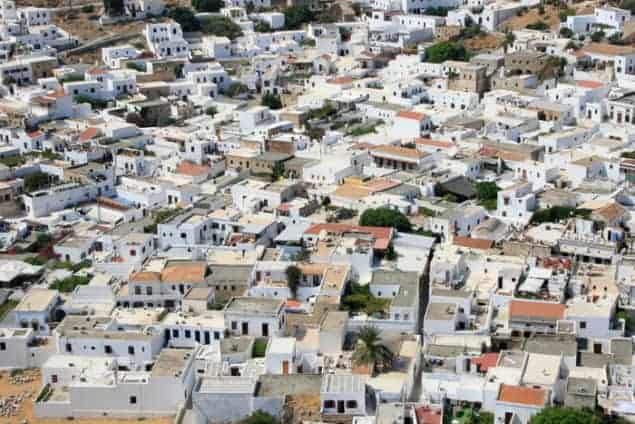
Replacing roofs and pavements with more reflective versions could lower global temperatures by up to 0.07 °C, equivalent to a reduction in carbon-dioxide emissions of about 150 billion tonnes. That is according to researchers in Canada who used a global climate model to look at the effects of such albedo changes in urban areas.
“Scientists have been proposing novel ideas – mostly untested – for the geoengineering of global climate,” says Hashem Akbari of Concordia University. “But humans have had experience with white buildings and reflective pavements for thousands of years without any unknown negative side effects. Hence, cool urban surfaces should be our geoengineering 101.”
From Lyon to Dunedin
Akbari and colleagues from Concordia used the University of Victoria Earth System Climate Model to investigate the effect of albedo increases of 0.1 until 2300 over all land between latitudes of ±20° (i.e. roughly from Mexico City and Hanoi in the north to Bulawayo, Zimbabwe, in the south), and between ±45° (approximately from Lyon in France and Portland in the US to Dunedin in New Zealand). The team used both a business-as-usual emissions scenario and an aggressive mitigation scenario.
The albedo increase on all land between ±20° latitude would decrease temperature by roughly one degree over 20 years, while the 45° latitude case would double this decrease. After 200 years, the decreases would be 1.3–3 °C. The scientists estimated that urban areas make up roughly 1% of the total land area in these regions; increasing albedo by 0.1 only in urban areas would be equivalent to a global change in land-surface albedo of 0.001.
“Increasing albedo of urban areas by about 0.1 – increasing flat-roof albedo by 0.4, increasing sloped-roof albedo by 0.25 and pavement albedo by 0.15 – cools the globe equivalent to offsetting more than 100 billion tonnes of carbon-dioxide emissions,” says Akbari. “This is equivalent to offsetting the emissions for all the cars in the world for the next 20 to 30 years.”
In order to firm up their calculations, the researchers employed two estimates of urban area: one from the Global Rural and Urban Mapping Project (GRUMP), and another from an analysis based on MODIS satellite data. The GRUMP results suggest that global urban areas are more than five times larger than the MODIS data set indicates.
Urban-only cooling significant
The climate model revealed that increasing albedo by 0.1 only in GRUMP-designated urban areas would produce long-term cooling of 0.07 °C, equivalent to 130–150 billion tonnes of carbon. Using the MODIS data for urban areas, in contrast, would cool the Earth by 0.01 °C, equivalent to 25–30 billion tonnes of carbon.
According to Akbari, albedo increases could lead to air-conditioning savings of about 20% for space under roofs. “This is a saving of about $50bn per year and carbon-dioxide savings of about 0.4 billion tonnes per year; over the next 100 years; that is an emission reduction of 40 billion tonnes, “he says. “The direct cooling of the Earth by reflecting radiation back into space is an added bonus that actually counters global warming while putting dollars in our pocket.”
The researchers found that the effect of albedo change did not depend to a large extent on the carbon-dioxide emissions scenario. That said, aggressive mitigation appeared to produce a roughly 10% larger temperature decrease, which the team ascribed to stronger snow-albedo feedback.
“We should develop policies for no-regret, no-cost global-cooling measures,” says Akbari. “Cool cities will save all the people in the world equally and the value of the dollar saved is significantly higher in developing countries than the developed country (e.g. $1 saved in the US pays for 10 min of a labourer in the US; in the developing countries that pays for a day of labourer).”
The scientists report their work in Environmental Research Letters.



